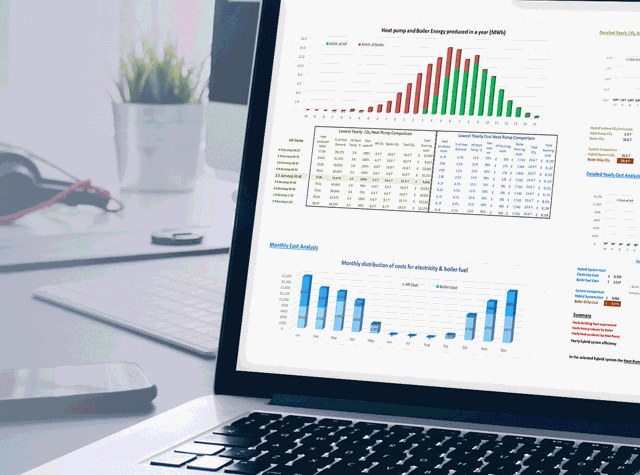
In 2022, phase 3b of the Public Sector Decarbonisation Scheme (PSDS) opened with applications pouring in. Indeed, funding streams quickly became over-subscribed, highlighting both a desire from the public sector to decarbonise and the need for funding to enable this to happen. Phase 3b provides up to £635 million of funding over the financial years 2023 to 2024 and 2024 to 2025. The PSDS funding will enable public sector organisations to upgrade heating systems in public buildings – including schools and hospitals - to ones powered by cleaner, cheaper and renewable energy and is designed to target applicants that have and are using a fossil-fuelled heating system that is coming to the end of its life.
So far, so good. Put aside the inevitable over-subscription of available funding, anything that helps towards achieving Net Zero Carbon has to be a good thing. However, the PSDS specifically excluded hybrid systems in its eligibility criteria and therefore a huge chunk of public sector buildings are currently unable to even dream of the decarbonisation of their heating system.
In all building types, heat pump technologies, like other low carbon heating systems, work to their best advantage when the thermal efficiency of a building is high. In new build scenarios this is, thankfully, rarely a problem given modern building techniques. In older stock, a fabric first approach is often recommended and of course, improving insulation and glazing amongst other things, can help improve the thermal efficiency of a building and reduce the amount of low carbon heating required. In some cases, these measures turn an unsuitable building into one that is suitable for low carbon heating via heat pump installation for example. But one size does not fit all. Should any building be excluded from the benefits of lower carbon heating systems? What about older historic and listed buildings?
Some buildings simply aren’t able to be retrofitted to exclusively use low carbon heating technologies which is where hybrid systems come in. A heat pump will provide heating for part of the year with the boiler kicking in on days where the outside temperature makes using the heat pump inefficient. For many, this is not a solution. At the Future of Heating in Historic Buildings conference, held in London last June, it was clear that heat pumps were the favoured solution to future heating needs and for some, the continued use of fossil fuels was a complete no go. The downside to this though is that some building’s users will inevitable go cold when a heat pump or alternative low carbon system cannot efficiently heat a building whose fabric cannot be sufficiently improved.
At ELCO, we take a pragmatic approach. The selector tool we introduced last year is a free piece of kit designed to help consultant engineers and D&B contractors to better understand the options open to them and their customers when it comes to choosing a heat pump only or hybrid system. Crucially, it gives a clear indication of the trade-off between potential carbon and cost savings when implementing different plant options by leveraging accurate weather data for a better understanding of the requirements on weather compensated systems.
The software offers state of art reports covering running costs, CO2 emissions and energy usage. It allows for step-by-step analysis of the heating system’s parameters including flow and return temperatures, thermal power and energy requirements. All of this is made possible by utilising accurate weather databases from 49 weather stations throughout the UK, product specific performance data and the know-how of our Technical Department.
Installing a hybrid system today in a building that simply cannot rely on a stand-alone low carbon system is still a step in the right direction towards delivering sustainable, safe and healthy buildings for a net zero future. If plans for the phased introduction of hydrogen into the gas supply turn into a reality (that’s a piece for another day!) and the decarbonisation of the electricity supply continues apace then NZC of hybrid systems is no longer out of reach and long term thermal comfort in all buildings may just be guaranteed.
Blog is written by Elco
